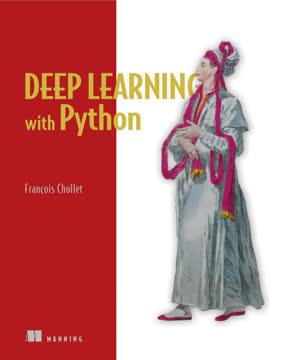Key Takeaways
1. Deep Learning Automates Feature Engineering
With deep learning, you learn all features in one pass rather than having to engineer them yourself.
Traditional vs. Deep Learning. Feature engineering, the manual crafting of data representations, was once the most crucial step in machine learning. Deep learning automates this process, learning features directly from data through successive layers of representation. This simplifies workflows and often leads to better performance, especially in complex domains like image and speech recognition.
End-to-end Learning. Deep learning models are trained end-to-end, meaning all layers are learned jointly, rather than in succession. This allows for complex, abstract representations to be learned by breaking them down into long series of intermediate spaces (layers); each space is only a simple transformation away from the previous one.
Simplified Workflows. By automating feature engineering, deep learning streamlines the machine learning process. Sophisticated multistage pipelines are replaced with single, simple models, reducing the need for human intervention and expertise in feature design.
2. Tensors are the Foundation of Neural Networks
In general, all current machine-learning systems use tensors as their basic data structure.
Tensors as Data Containers. Tensors are multidimensional arrays that serve as the fundamental data structure in deep learning. They generalize matrices to an arbitrary number of dimensions, allowing for the representation of scalars (0D tensors), vectors (1D tensors), matrices (2D tensors), and higher-dimensional data.
Key Tensor Attributes:
- Number of axes (rank): The number of dimensions of the tensor.
- Shape: A tuple of integers describing the dimensions along each axis.
- Data type: The type of data stored in the tensor (e.g., float32, int8).
Real-World Tensor Examples. Tensors are used to represent various types of data, including vector data (2D tensors), timeseries data (3D tensors), images (4D tensors), and videos (5D tensors). Understanding how to manipulate tensors is crucial for working with neural networks.
3. Neural Networks Learn Through Gradient Descent
The fundamental trick in deep learning is to use this score as a feedback signal to adjust the value of the weights a little, in a direction that will lower the loss score for the current example.
The Learning Process. Neural networks learn by adjusting their weights based on a feedback signal from a loss function. This process involves computing the gradient of the loss with respect to the network's parameters and updating the weights in the opposite direction of the gradient.
Gradient Descent Optimization:
- Loss Function: Measures the mismatch between the network's predictions and the true targets.
- Optimizer: Implements the backpropagation algorithm to adjust the weights based on the loss score.
- Backpropagation: The central algorithm in deep learning, which chains derivatives to efficiently compute gradients.
Stochastic Gradient Descent (SGD). The weights are adjusted a little in the correct direction, and the loss score decreases. This is the training loop, which, repeated a sufficient number of times (typically tens of iterations over thousands of examples), yields weight values that minimize the loss function.
4. Keras Simplifies Deep Learning Development
Keras, one of the most popular and fastest-growing deeplearning frameworks, is widely recommended as the best tool to get started with deep learning.
High-Level API. Keras is a Python deep-learning framework that provides a user-friendly API for building and training neural networks. It simplifies the development process by offering high-level building blocks and abstracting away low-level operations.
Backend Flexibility. Keras supports multiple backend engines, including TensorFlow, Theano, and CNTK, allowing developers to seamlessly switch between them without changing their code. This modularity provides flexibility and enables experimentation with different computational platforms.
Key Keras Features:
- Easy prototyping of deep-learning models
- Built-in support for convolutional and recurrent networks
- Support for arbitrary network architectures
5. Overfitting Requires Vigilant Monitoring and Mitigation
The test-set accuracy turns out to be 97.8%—that’s quite a bit lower than the training set accuracy. This gap between training accuracy and test accuracy is an example of overfitting.
The Overfitting Challenge. Overfitting occurs when a model performs well on its training data but poorly on new, unseen data. This is a central problem in machine learning, and it's crucial to monitor and mitigate overfitting to ensure good generalization.
Techniques to Combat Overfitting:
- Reducing the network's size: Decreasing the number of layers or units per layer.
- Adding weight regularization: Applying L1 or L2 regularization to penalize large weights.
- Adding dropout: Randomly dropping out units during training to prevent the network from relying on specific connections.
- Data Augmentation: Generating more training data from existing training samples, by augmenting the samples via a number of random transformations that yield believable-looking images.
The Universal Tension. The ideal model is one that stands right at the border between underfitting and overfitting; between undercapacity and overcapacity.
6. Convnets Excel in Computer Vision Tasks
The primary reason deep learning took off so quickly is that it offered better performance on many problems.
Local Patterns. Convolutional neural networks (convnets) are specifically designed for processing image data. They excel at learning local patterns and spatial hierarchies, making them highly effective for tasks like image classification and object detection.
Translation Invariance. Convnets learn patterns that are translation invariant, meaning they can recognize a pattern regardless of its location in the image. This data efficiency is a key advantage for image processing.
Key Operations:
- Convolution: Extracts local features from the input image.
- Max Pooling: Downsamples feature maps to reduce computational complexity and induce spatial hierarchies.
7. Pretrained Networks Offer Powerful Transfer Learning
Trained deep-learning models are repurposable and thus reusable: for instance, it’s possible to take a deep-learning model trained for image classification and drop it into a video-processing pipeline.
Leveraging Existing Knowledge. Pretrained networks are models that have been trained on large datasets, such as ImageNet. These networks have learned generic features that can be useful for a wide range of computer vision tasks.
Feature Extraction. One way to use a pretrained network is to extract features from new images using the convolutional base of the pretrained model. These features can then be fed into a new classifier trained from scratch.
Fine-Tuning. Another technique is to fine-tune the pretrained network by unfreezing some of its top layers and jointly training them with the new classifier. This allows the model to adapt its learned representations to the specific task at hand.
8. RNNs Capture Sequential Data Dependencies
A recurrent neural network (RNN) adopts the same principle, albeit in an extremely simplified version: it processes sequences by iterating through the sequence elements and maintaining a state containing information relative to what it has seen so far.
Sequential Data Processing. Recurrent neural networks (RNNs) are designed to process sequential data, such as text and timeseries. They maintain an internal state that is updated as they iterate through the sequence, allowing them to capture dependencies between elements.
LSTM and GRU Layers. LSTM (Long Short-Term Memory) and GRU (Gated Recurrent Unit) layers are advanced types of RNNs that address the vanishing gradient problem, enabling them to learn long-term dependencies in sequences.
Applications:
- Natural Language Processing: Sentiment analysis, machine translation
- Timeseries Analysis: Weather forecasting, stock price prediction
9. Text Vectorization Enables NLP Tasks
All inputs and targets in a neural network must be tensors of floating-point data (or, in specific cases, tensors of integers).
From Text to Numbers. Neural networks can only process numerical data, so text must be converted into tensors. This process, called text vectorization, involves tokenizing the text and associating numeric vectors with the generated tokens.
One-Hot Encoding. A basic method where each word is represented by a binary vector with a 1 at the index corresponding to the word and 0s elsewhere.
Word Embeddings. A more advanced technique where words are represented by dense, low-dimensional vectors learned from data. These embeddings capture semantic relationships between words.
10. Generative Models Create New Content
The potential of artificial intelligence to emulate human thought processes goes beyond passive tasks such as object recognition and mostly reactive tasks such as driving a car. It extends well into creative activities.
Learning Data Distributions. Generative models are capable of learning the underlying statistical distribution of a dataset. Once trained, they can sample from this distribution to generate new data points that resemble the original data.
Variational Autoencoders (VAEs). VAEs learn a structured latent space that allows for image editing via concept vectors. They are well-suited for tasks like face swapping and style transfer.
Generative Adversarial Networks (GANs). GANs consist of a generator and a discriminator that compete against each other. The generator learns to create realistic images, while the discriminator learns to distinguish between real and generated images.
11. Deep Learning Has Limitations in Reasoning
In general, anything that requires reasoning—like programming or applying the scientific method—long-term planning, and algorithmic data manipulation is out of reach for deep-learning models, no matter how much data you throw at them.
Pattern Recognition vs. Reasoning. Deep-learning models excel at pattern recognition but struggle with tasks that require reasoning, abstraction, and long-term planning. They lack the ability to handle hypotheticals and adapt to radically novel situations.
Local vs. Extreme Generalization. Deep-learning models exhibit local generalization, meaning they can adapt to new situations that are similar to their training data. However, they are not capable of extreme generalization, which involves quickly adapting to radically novel situations using little or no new data.
The Need for New Approaches. To overcome these limitations, future AI systems may need to incorporate algorithmic modules that provide reasoning and abstraction capabilities, in addition to the geometric modules used in deep learning.
12. Continuous Learning is Essential
Staying up to date in a fast-moving field.
Rapid Evolution. The field of deep learning is constantly evolving, with new algorithms, techniques, and applications emerging at a rapid pace. It's crucial to stay up to date with the latest developments to remain effective in the field.
Resources for Continuous Learning:
- Kaggle: Practice on real-world problems and learn from other practitioners.
- arXiv: Read about the latest research developments in deep learning.
- Keras Ecosystem: Explore the Keras documentation, blog, and community forums.
Lifelong Journey. Learning about deep learning and AI is a continuous process. Embrace the challenge and continue to explore, question, and research to expand your knowledge and skills.
Last updated:
FAQ
What's Deep Learning with Python about?
- Focus on Deep Learning: Deep Learning with Python by François Chollet introduces deep learning concepts using Python and the Keras library, emphasizing practical applications and intuitive explanations.
- Hands-on Approach: The book provides numerous examples and code snippets, allowing readers to implement deep learning models for various tasks, including image classification and text generation.
- Comprehensive Coverage: It covers fundamental topics, advanced techniques, and generative models, making it suitable for both beginners and experienced practitioners.
Why should I read Deep Learning with Python?
- Authoritative Insight: Written by François Chollet, the creator of Keras, the book offers unique insights into deep learning practices and the Keras framework.
- Accessible Learning: Designed for readers with intermediate Python skills, it makes complex concepts approachable and understandable.
- Real-World Applications: The book emphasizes practical applications of deep learning, preparing readers to apply these techniques in real-world scenarios.
What are the key takeaways of Deep Learning with Python?
- Understanding Deep Learning: Readers will gain a solid understanding of deep learning fundamentals, including neural networks, convolutional networks, and recurrent networks.
- Practical Implementation: The book provides hands-on experience with Keras, enabling readers to build and train their own deep learning models.
- Advanced Techniques: It covers advanced topics such as generative models, neural style transfer, and text generation, equipping readers with a broad skill set.
What is the significance of Keras in Deep Learning with Python?
- User-Friendly API: Keras is highlighted for its simplicity and ease of use, allowing users to build complex neural networks with minimal code.
- Flexibility: It supports various backends, including TensorFlow and Theano, enabling users to switch between them seamlessly.
- Rapid Prototyping: Keras facilitates rapid prototyping of deep learning models, making it an ideal choice for both beginners and experienced developers.
How does Deep Learning with Python address overfitting?
- Understanding Overfitting: Overfitting occurs when a model learns patterns specific to the training data but fails to generalize to new data.
- Regularization Techniques: The book discusses methods like L2 regularization and dropout to mitigate overfitting, helping improve model performance on unseen data.
- Data Augmentation: It introduces data augmentation as a strategy to artificially increase the size of the training dataset, enhancing model robustness.
What are the mathematical building blocks of neural networks in Deep Learning with Python?
- Tensors and Operations: Tensors are introduced as the fundamental data structure in deep learning, crucial for manipulating data in neural networks.
- Gradient Descent: The book covers gradient descent as the optimization algorithm used to update model weights, with backpropagation for computing gradients efficiently.
- Loss Functions: Emphasizes the importance of loss functions in measuring model performance, discussing types like binary crossentropy and mean squared error.
How does Deep Learning with Python explain convolutional neural networks (CNNs)?
- Understanding CNNs: The book provides a detailed explanation of CNNs, highlighting their architecture and how they process image data.
- Convolution and Pooling: It explains convolution as a way to learn local patterns in images, with max pooling for downsampling feature maps.
- Practical Examples: Includes examples of using CNNs for image classification tasks, demonstrating implementation and training using Keras.
What is the role of data preprocessing in Deep Learning with Python?
- Importance of Preprocessing: Data preprocessing is crucial for preparing raw data for neural networks, leading to better model performance and faster convergence.
- Normalization Techniques: Discusses techniques like scaling input values to a specific range to ensure effective learning and prevent issues with varying feature scales.
- Handling Missing Values: Addresses strategies for dealing with missing values, ensuring the model can learn from available data without being adversely affected.
How does Deep Learning with Python suggest evaluating machine learning models?
- Training, Validation, and Test Sets: Emphasizes splitting data into these sets to evaluate model performance accurately, preventing overfitting.
- K-Fold Cross-Validation: Introduces this method for obtaining reliable performance estimates, especially when data is limited.
- Metrics for Success: Discusses metrics like accuracy, precision, and recall, essential for guiding model optimization.
What are the generative models discussed in Deep Learning with Python?
- Variational Autoencoders (VAEs): Explains how VAEs learn structured latent spaces for generating new images and editing existing ones.
- Generative Adversarial Networks (GANs): Covers the architecture and training of GANs, highlighting their ability to produce realistic images.
- Practical Implementations: Provides code examples for implementing both VAEs and GANs, allowing readers to experiment with generative techniques.
How does Deep Learning with Python explain the concept of transfer learning?
- Pretrained Models: Discusses using pretrained models to leverage existing knowledge, allowing for faster training and improved performance on new tasks.
- Fine-Tuning: Covers the process of fine-tuning a pretrained model on a new dataset, adjusting the model to better fit the specific task.
- Practical Examples: Provides examples of implementing transfer learning using Keras, making it easier to apply in real-world scenarios.
What are the limitations of deep learning discussed in Deep Learning with Python?
- Lack of Understanding: Emphasizes that deep learning models do not truly understand their inputs, leading to potential misinterpretations.
- Local vs. Extreme Generalization: Distinguishes between local generalization and extreme generalization, highlighting current model limitations.
- Need for Reasoning: Points out that deep learning struggles with tasks requiring reasoning and long-term planning, essential for complex applications.
Review Summary
Deep Learning with Python receives overwhelmingly positive reviews, praised for its clear explanations, practical approach, and hands-on examples using Keras. Readers appreciate the balance between theory and application, finding it accessible for beginners while still valuable for experienced practitioners. The book is commended for its coverage of various deep learning architectures and techniques, with many highlighting its usefulness as a reference. Some reviewers note that it focuses more on implementation than mathematical theory, which suits its intended audience of programmers and practical learners.
Similar Books
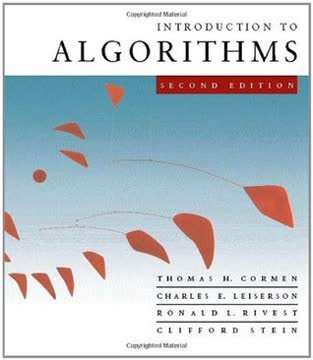
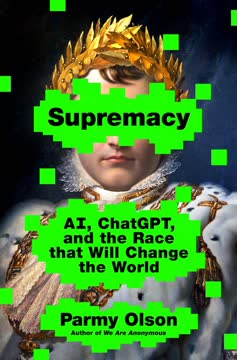

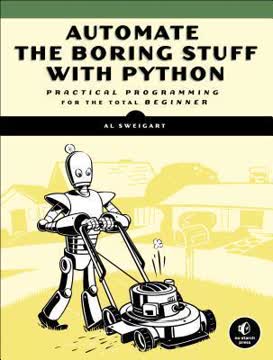
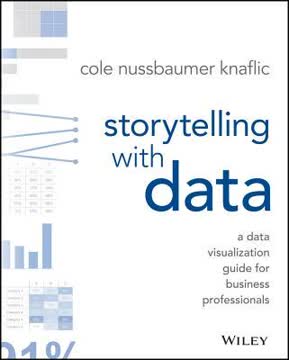

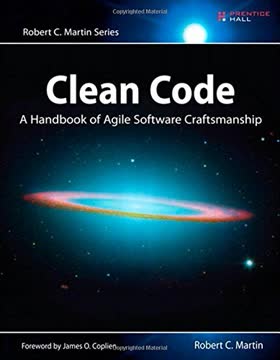
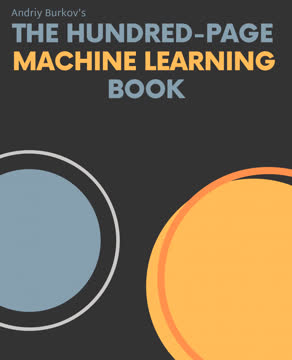
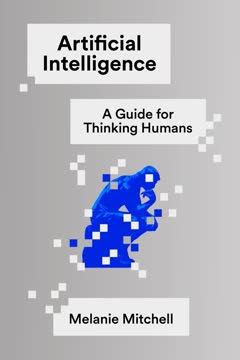
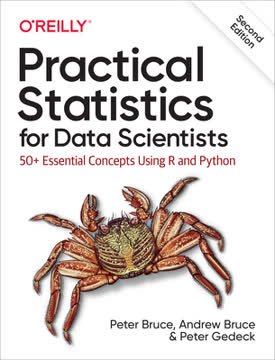
Download PDF
Download EPUB
.epub digital book format is ideal for reading ebooks on phones, tablets, and e-readers.
